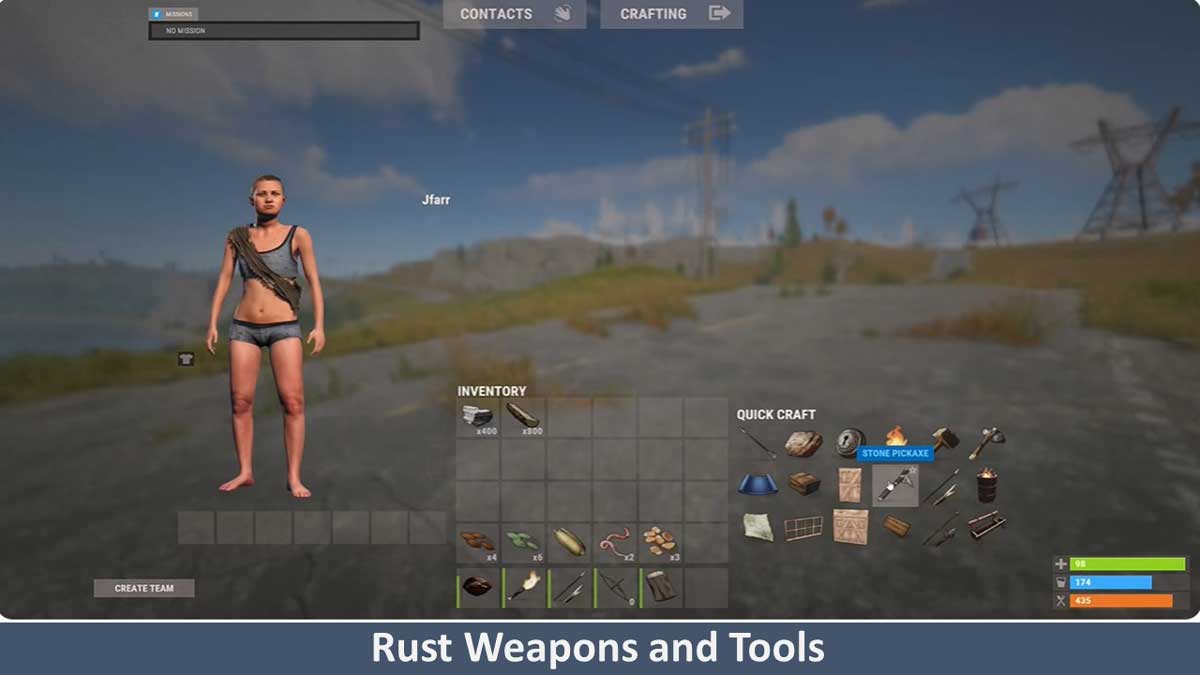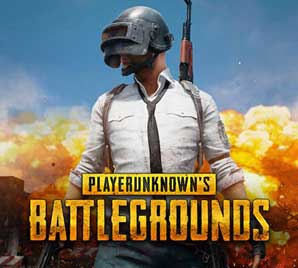Rust Weapons and Tools: Crafting, Stats, and Strategies
Rust Weapons and Tools

Rust, a popular survival game, centers around crafting, enabling players to forge essential weapons and tools for survival in its harsh environment. Crafting in Rust encompasses various possibilities with unique stats and strategic options that players can exploit. Proficiency in crafting is pivotal for Rust gameplay, encompassing melee, ranged weapons, and explosives, each with distinct stats like damage, range, and accuracy dictating the best utilization strategy. Comprehending these stats aids players in formulating effective strategies, with factors like materials also influencing the crafted items’ attributes, necessitating thoughtful crafting decisions.
Understanding the Basics of Crafting in Rust
Crafting is a core aspect of Rust’s survival gameplay, enabling the creation of weapons, tools, and structures crucial for thriving in its challenging world. Players can craft items using a workbench, which can be located on the map or crafted by players themselves.
To craft, players must gather resources like wood, metal fragments, stone, and cloth, acquired through environmental harvesting or looting. Utilizing the workbench streamlines crafting and unlocks various recipes. Rust features three workbench types: Level 1, Level 2, and Level 3, each with distinct requirements and recipes.
Effective crafting in Rust demands a solid grasp of game mechanics, including recipe knowledge, resource utilization, and efficient workbench operation. In essence, mastering crafting basics is vital for survival, enabling players to craft weapons, tools, structures, and defenses to thrive in Rust’s unforgiving environment.
Essential Tools and Their Uses
Resource gathering is vital for survival in Rust, and having the appropriate tools is key to efficiency. The hatchet and pickaxe are essential for gathering wood, stone, and metal, with each excelling at specific resources. The hatchet is ideal for wood, while the pickaxe is more efficient for stone and metal.
Additionally, consider crafting other valuable tools like the torch, providing light in dark areas, and serving as an emergency weapon. The furnace is crucial for smelting resources, such as metal ore, to create usable materials for advanced crafting. Other handy tools include the hammer for repairing structures and the building plan for pre-building structure layouts.
In Rust, acquiring the right tools, particularly gathering tools like the hatchet and pickaxe, as well as essential tools like the torch and furnace, is imperative for successful resource gathering and crafting.
Rust Weapons and Tools
Weapons in Rust
Rust is a survival game that requires players to gather resources, build bases, and fight off other players and hostile wildlife. Weapons are an essential part of the game, and players must know how to craft, use, and maintain them to survive. This section will cover the different types of weapons in Rust, their stats, and strategies for using them effectively.
Melee Weapons
Melee weapons represent the fundamental weapon category in Rust. They are useful for gathering resources and defending oneself against wildlife, but they are not very effective against other players. The following table shows the different types of melee weapons in Rust:
| Weapon | Damage | Range | Crafted |
| Rock | 10 | Short | No |
| Hatchet | 20 | Short | Yes |
Ranged Weapons
Ranged weapons are essential for combat against other players and wildlife. They allow players to attack from a distance, which can be advantageous in many situations. The following table shows the different types of ranged weapons in Rust:
| Weapon | Damage | Range | Ammo | Crafted |
| Hunting Bow | 35 | Medium | Arrows | Yes |
| Crossbow | 50 | Medium | Arrows | Yes |
| Revolver | 40 | Short | Pistol Ammo | Yes |
| Semi-Automatic Rifle | 50 | Long | Rifle Ammo | Yes |
| Thompson | 35 | Medium | Pistol Ammo | Yes |
| Assault Rifle | 40 | Long | Rifle Ammo | Yes |
| Bolt Action Rifle | 90 | Long | Rifle Ammo | Yes |
| MP5A4 | 25 | Medium | Pistol Ammo | Yes |
Explosive Weapons
Explosive weapons are powerful but dangerous. They can destroy structures and kill players and wildlife, but they also have a significant risk of causing collateral damage. The following table shows the different types of explosive weapons in Rust:
| Weapon | Damage | Range | Crafted |
| Beancan Grenade | 100 | Short | Yes |
| F1 Grenade | 150 | Short | Yes |
| Rocket Launcher | 500 | Long | Yes |
Shotguns
Shotguns are powerful weapons that are effective at close range. They are useful for defending bases and attacking other players in close quarters. The following table shows the different types of shotguns in Rust:
| Weapon | Damage | Range | Ammo | Crafted |
| Pipe Shotgun | 80 | Short | Shotgun Shells | Yes |
| Double Barrel Shotgun | 100 | Short | Shotgun Shells | Yes |
| Pump Shotgun | 90 | Short | Shotgun Shells | Yes |
| Waterpipe Shotgun | 80 | Short | Shotgun Shells | Yes |
Pistols
Pistols are versatile weapons that can be used in many situations. They are effective at short to medium range and can be used for both defense and offense. The following table shows the different types of pistols in Rust:
| Weapon | Damage | Range | Ammo | Crafted |
| Eoka Pistol | 20 | Short | Pistol Ammo | Yes |
| Revolver | 40 | Short | Pistol Ammo | Yes |
| Python Revolver | 50 | Short | Pistol Ammo | Yes |
Machine Guns
Machine guns are powerful weapons that are effective at medium to long range. They are useful for attacking large groups of players or for defending a base from a distance. The following table shows the different types of machine guns in Rust:
| Weapon | Damage | Range | Ammo | Crafted |
| Custom SMG | 25 | Medium | Pistol Ammo | Yes |
| M249 | 40 | Long | Rifle Ammo | No |
That’s it for the section on weapons in Rust.
Weapon Attachments and Their Impact
Weapon attachments wield a substantial influence on Rust gameplay, impacting aim precision, recoil control, and overall survival chances. Let’s explore some of the favored attachments in Rust and their gameplay effects.
Holosight:
A widely embraced attachment, the holo sight offers a clear and precise aiming picture, enhancing accuracy. Ideal for mid-range combat scenarios, it aids in swiftly acquiring and eliminating targets with precision.
Muzzle Brake:
Another favored choice, the muzzle brake, reduces recoil, ensuring players maintain their aim during extended firefights. This attachment permits more rapid and accurate weapon fire, proving especially advantageous for automatic firearms.
Weapon Flashlight:
Perfect for low-light conditions, the weapon flashlight emits a powerful beam, illuminating darkness and aiding players in spotting potential threats. With this attachment, navigating dim areas becomes safer as it reveals hidden dangers.
In Rust, selecting the right weapon attachments is pivotal, as they can significantly improve accuracy, recoil management, and visibility in various combat situations.
Understanding Damage and Range
In Rust, grasping the concepts of damage and range is pivotal for effective weapon and tool utilization. Damage signifies a weapon’s capacity to harm adversaries, while range determines its effective reach.
Weapons exhibit varying damage and range values, influenced by factors like attachments, ammo type, and aiming precision. Player weapon selection and strategic planning should account for these factors. For instance, a bolt-action rifle boasts high damage and long-range capabilities, making it an excellent choice for distant encounters. Conversely, shotguns excel in close-quarters combat, offering low range but high damage.
When hunting animals in Rust, considering damage and range remains important. Distinct animals possess differing health levels, demanding more potent weapons for some. Additionally, certain animals require a cautious, long-range approach to prevent startling them.
In Rust, success hinges on a profound understanding of damage and range, prompting players to make thoughtful choices in weaponry and strategies.
Hunting and Gathering Resources
In Rust, mastering hunting and gathering is essential for survival and progression. Gathering resources is essential for crafting tools, weapons, and structures. Here are some resource-gathering tips:
Hunting:
- Use a variety of weapons like bows, crossbows, guns, and melee tools to hunt animals.
- Different animals yield various resources; bears are challenging but offer abundant loot, while chickens are easier but provide fewer resources.
Gathering:
- Harvest wood from trees, mine rocks, and ore nodes for stone and metal, and find sulfur in caves or monuments.
- Collect scrap by recycling items, looting barrels, and solving monument puzzles.
Medical:
- Gather medical resources like cloth, bandages, and syringes to treat injuries.
- Craft bandages and syringes using cloth and other materials obtained from animals or gatherings.
Traps:
- Use wood, metal, and other materials to create traps for catching animals or players.
- Place traps on the ground or walls for various purposes.
Entertainment:
- Collect resources to craft fun items like fireworks, guitars, and paintings, adding enjoyment to your Rust experience.
Understanding Rust on Different Platforms
Rust is a popular survival game playable on PC, Xbox One, and PlayStation 4. Though the gameplay is similar, some platform-specific differences exist. Xbox One players may notice slight variations in graphics and performance. Controls can also differ by platform, requiring adjustment.
Despite these variances, Rust offers an enjoyable experience on all platforms. Note that certain features, like mods or custom servers, may be exclusive to the PC version. Fair play is essential; using hacks or cheats, including premium Rust hacks, can result in bans and disrupt others’ enjoyment. In summary, while Rust varies slightly by platform, players can still relish its mechanics, emphasizing fair gameplay and discouraging hacks.
Conclusion
In conclusion, Rust Weapons and Tools – mastering Rust’s crafting, weapons, and tools is paramount to thrive in its unforgiving world. Understanding the basics of crafting, the importance of essential tools, and the diversity of weapons is the foundation for success. Weapon attachments offer customization, while knowledge of damage and range guides strategic choices. Effective hunting and resource gathering are vital for survival.
Moreover, recognizing Rust’s nuances on different platforms ensures a seamless gaming experience. However, it’s crucial to maintain fair play and abstain from hacks or cheats to uphold the game’s integrity. In this challenging and dynamic survival game, players who grasp these essential aspects will navigate Rust’s complexities and increase their chances of survival and success.






